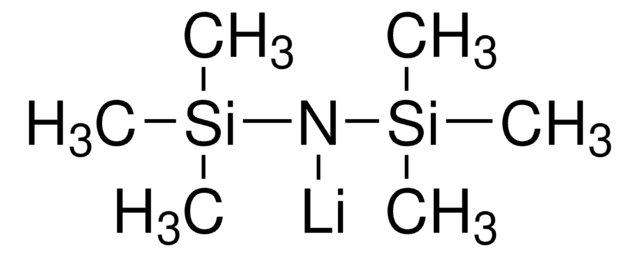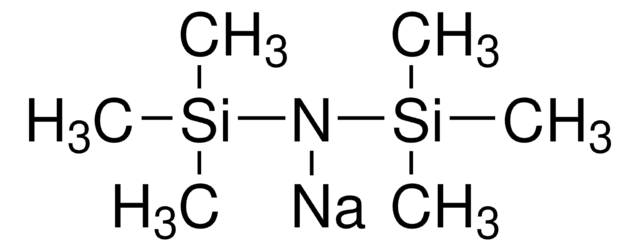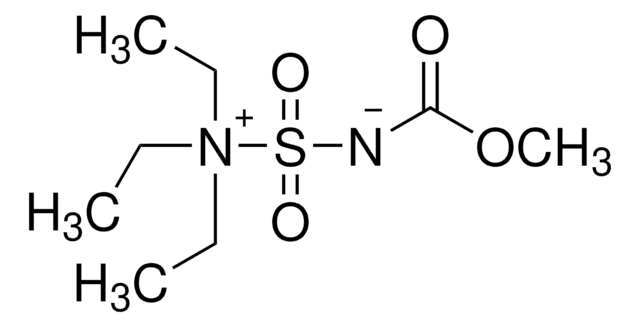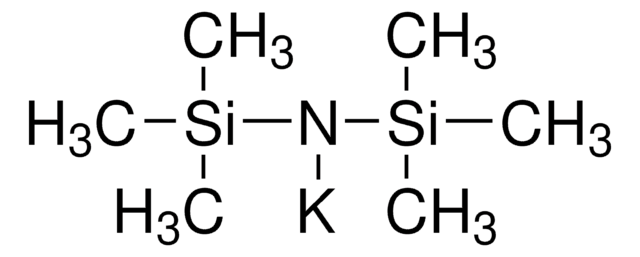766917
Litio bis(trimetilsilil)amida solution
1.5 M in THF
Sinónimos:
Hexametildisilazano lithium salt
About This Item
Productos recomendados
form
liquid
Quality Level
concentration
1.5 M in THF
density
0.893 g/mL at 25 °C
SMILES string
[Li]N([Si](C)(C)C)[Si](C)(C)C
InChI
1S/C6H18NSi2.Li/c1-8(2,3)7-9(4,5)6;/h1-6H3;/q-1;+1
InChI key
YNESATAKKCNGOF-UHFFFAOYSA-N
¿Está buscando productos similares? Visita Guía de comparación de productos
Categorías relacionadas
General description
Application
- In the deprotonation and nucleophilic difluoromethylation reactions.
- 3-methoxy substituted dihydropyrrole derivatives by reacting with aldehydes and lithiated methoxyallene via in situ formations of N-trimethylsilylated imines.
- In Darzens condensation and directed aldol condensation reactions.
- To synthesize poly(N-octyl-p-benzamide)s by chain-growth polycondensation of 4-octylaminobenzoic acid methyl ester.
signalword
Danger
Hazard Classifications
Carc. 2 - Eye Dam. 1 - Flam. Liq. 2 - Self-heat. 1 - Skin Corr. 1B - STOT SE 3
target_organs
Central nervous system, Respiratory system
supp_hazards
Storage Class
4.2 - Pyrophoric and self-heating hazardous materials
wgk_germany
WGK 2
flash_point_f
31.3 °F - closed cup
flash_point_c
-0.4 °C - closed cup
Elija entre una de las versiones más recientes:
¿Ya tiene este producto?
Encuentre la documentación para los productos que ha comprado recientemente en la Biblioteca de documentos.
Los clientes también vieron
Nuestro equipo de científicos tiene experiencia en todas las áreas de investigación: Ciencias de la vida, Ciencia de los materiales, Síntesis química, Cromatografía, Analítica y muchas otras.
Póngase en contacto con el Servicio técnico













